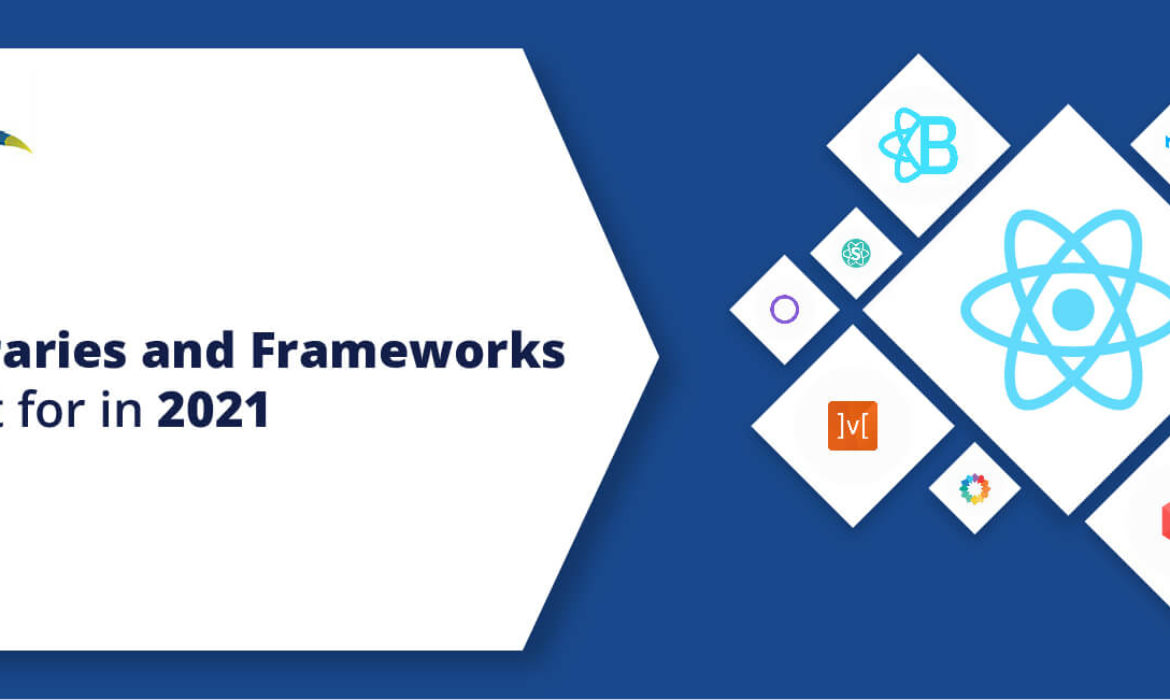Top 20 React Libraries and Frameworks to look out for in 2021
Javascript is one of the unconquerable front-end languages. About 95.2% of websites are built using Javascript. React is one of the most popular front-end frameworks in Javascript while building applications. Let’s get into the blog and understand more about React and its libraries.
What is ReactJS?
React is an open-source front-end JavaScript library for developing user interfaces or UI components. It’s managed by Facebook and a community of individual developers and companies. React can be used as a platform for building single-page or mobile applications.
The following are the top 20 frameworks and react libraries to look for in 2021
1. Redux: Redux is a JavaScript library for managing and centralizing the application state. It is an open-source Javascript library. It’s most commonly used with libraries like React or Angular to create user interfaces. It is used in integration with React, but it functions with other React-like frameworks also.
2. MobX: State management becomes simple with the help of MobX which enables developers to adjust or extract the state. Both React and MobX function hand-in-hand to ensure robust quality and efficiency.
3. Create React: Create React App is a tool created by Facebook developers. It helps to bootstrap a new ReactJS project by creating a new single-page application with a simple configuration with one command. It simplifies the process of setting up a new application and makes it much less time-consuming.
4. Rebass: a tiny component library that packs a punch. Rebass contains only 8 components and weighs only 4 KBs but can be used to create a robust set of themable UI elements. It’s based on the Styled System library and focuses on providing a quick start for your development process.
5. React Admin: React Admin is a tool for building B2B admin apps on top of REST/GraphQL APIs and can be customized by design. It is created with several popular projects alongside React: Redux, React Router, React Final Form, and Material UI.
6. React Bootstrap: The React Bootstrap replaces the JavaScript of Bootstrap with that of React to ensure better control on each of the components. Developers can also choose from a vast range of available Bootstrap themes. Each of the components is readily available to contribute better framework development toward the front end. As a UI attachment, the React Bootstrap maintains the Bootstrap foundation.
7. Ant Design: Ant design is a consolidated building framework of Webpack, NPM, DVA, Dora, and Babel. This component library is vast, and it has an exceptional client base.
8. Grommet: Grommet is a React component library that boasts responsive and accessible mobile-first code components. It enables screen reader tags, keyboard navigation, and more, and includes atomic design strategies.
9. Material UI: MUI provides a simple, customizable, and accessible library of React components. It is the most popular UI package of all React libraries.
10. React Spinner: Spinner Component provides a way to show the loading effect. We can use it to show the loading state, whenever required in our application. It comprises loading spinners depending on Halogen. It’s an entertainment factor that keeps visitors involved during the page loading so they don’t feel the urgency for leaving the page simultaneously making a better user experience. React Spinner has more than 20 React loaders to provide to all users.
11. Semantic UI React: Semantic UI React is the official Semantic UI plugin. It is free from jQuery and contains shorthand props, a declarative API, augmentation, an auto-controlled state, sub-components, and so forth.
12. Evergreen UI: Evergreen is a design system for building ambitious products on the web. It contains a set of polished React components that work out of the box, built on top of a React UI Primitive for endless composability.
13. Blueprint: The React components in Blueprint are mostly used in desktop apps. The React components in Blueprint are mostly used in desktop apps. These components are highly suitable for developing data-dense and complex user interfaces.
14. React DnD: React DnD is a set of React utilities to help you build complex drag and drop interfaces while keeping your components decoupled.
15. React Desktop: This library seeks to replicate the desktop experience for developers on the web. This feature makes React Desktop, as it creates an exact replica of the desktop experience.
16. Styled Components: Styled Components is a CSS tool that makes your React project run more smoothly. This library helps you to develop reusable, tiny components that are essential to your application’s design.
17. React Fabric: React-fabric implements the Office UI Fabric components natively in React. It is built using the latest & greatest in front-end development like ES6+, CSS Modules (with SASS), and Webpack. All components are dumb by design which makes them easy to use with other react libraries like redux-form.
18. React Virtualized: The React Virtualized is specially designed to meet the user’s tubular requirements. The library proves to be useful either in assessing several columns in a single table or with different components. The React Virtualized React library includes different components including a cell measurer, an auto sizer, a column sizer, a multigrid, and an arrow keys tepper.
19. React-Motion: This well-known animation React library utilizes spring configuration for describing the animation. Thereby, it reduces your concerns regarding complicacy and controlled duration.
20. React Intl: React Intl is part of FormatJS. It provides bindings to React via its components and API. Features. This library provides React components and an API to format dates, numbers, and strings, including pluralization and handling translations.
Conclusion:
Obviously, those are only a few popular libraries; there are many more, and anyone may easily find those that will be useful. Each of the React libraries and frameworks listed in this article serves a specific purpose.

